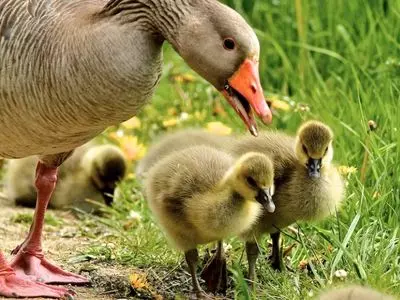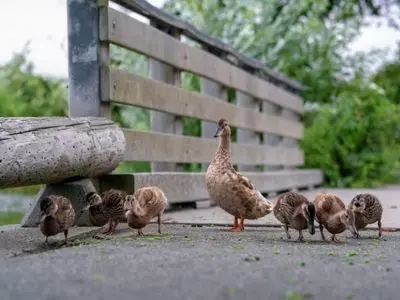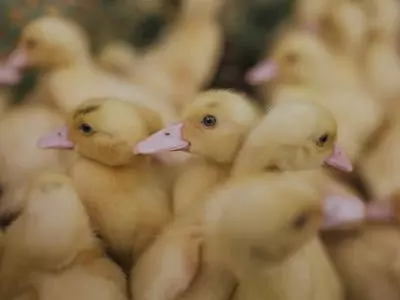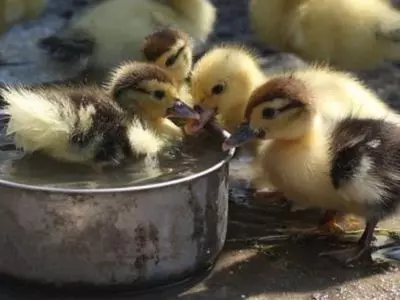No products in the cart.
Ducks
What Are Baby Ducks Called – CHICKS?
You probably already know that baby chickens are called “chicks”, but what are baby ducks called? Are baby ducks called chicks, too? Baby ducks are referred to as ducklings, which sounds just as cute as they are – but that’s not all they’re called. We’ll explore the different names of baby ducks and all about the duckling lifecycle!
*This post may have affiliate links, which means I may receive commissions if you choose to purchase through links I provide (at no extra cost to you). As an Amazon Associate I earn from qualifying purchases. Please read my disclaimer for additional details.
What Are Baby Ducks Called?
Baby ducks are called ducklings. A baby duck is one of the cutest animals you’ll ever see, what with its big, black eyes, tiny bill, and fluffy down. A group of young ducks is called a “brood.” Young ducks are extremely reliant on their caregiver or mother, but only for a brief period as most breeds reach maturity in just 1-2 months.Duckling Terms

All About Ducklings
What Do Ducklings Look Like?
Ducklings are typically brown or yellow in color. This is called their “down feathers”. After 7–9 weeks, they begin to develop contour feathers, which look more like an adult duck. While ducklings can vary somewhat from one species to the next, there are some aspects that all ducklings share:- The colors yellow and brown are common in ducklings.
- They measure 4 to 5 inches in height.
- Ducklings are fluffy because they have no contour feathers, only down, when they hatch.
Hatching Season
Ducklings can be purchased from hatcheries year-round because ducks can be induced to lay eggs with the help of artificial lights. The peak of egg production occurs between late March and early June. By the end of the fall, ducks that aren’t artificially encouraged to lay will slow egg production considerably, if not cease totally. It’s important to note that a duckling born in the winter will have a harder time surviving outdoors than one born in the spring or summer.Duckling Sizes
How big ducklings are depends on their breed. The Pekin duck is one of the most common types of domesticated ducks. The larger “Jumbo Pekin” version of this breed of chicken is also available. When fully grown, Jumbo Pekins can outweigh most other duck breeds by several pounds. Call ducks are one of the tiniest domestic duck breeds, with most adults weighing less than 2 pounds (what they lack in size they more than makeup for in chatter, however). Compared to larger ducklings like the Jumbo Pekin, Call ducklings will be quite little.Duck Parenting

Drakes
Male ducks do not pitch in to assist raise their young. Although ducks do form pairs, these relationships typically last for only one year (and even then, drakes are famous for their wandering eyes). In the wild, a female duck will mate with a drake, and the drake will remain with her thereafter to protect her from other male ducks. The drake will spend less and less time with his mate when the ducklings hatch, eventually abandoning her altogether in the fall when he begins his annual molt. For captive ducks, the norms will shift slightly. When the drake and duck ratio is right in a captive situation, he will mate with every female duck in the flock. However, the domestic drake will still show an innate tendency to guard the females and pay no attention to the young.Ducks
Female ducks will care for their ducklings until they’re about 1-2 months of age. Ducklings won’t be able to survive without their mother before they fledge, or mature. After fledging, ducklings will become independent of their mother and begin mating and laying eggs, themselves, at around 4 months of age.Determining a Duckling’s Gender


